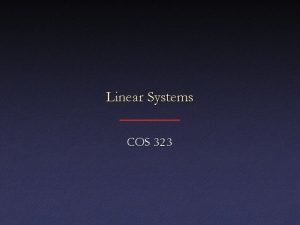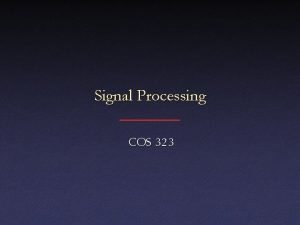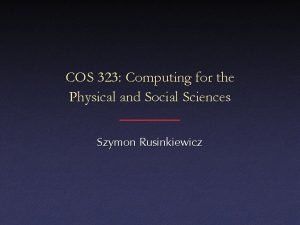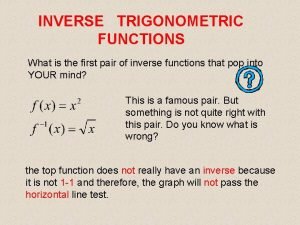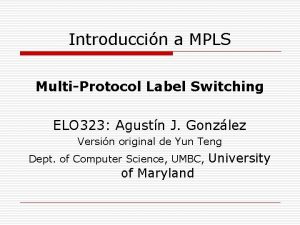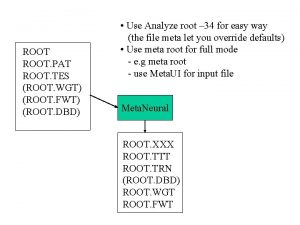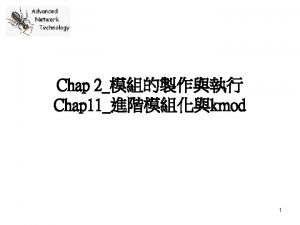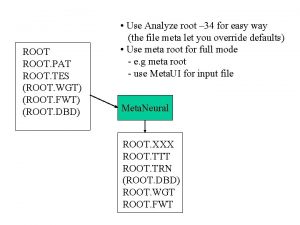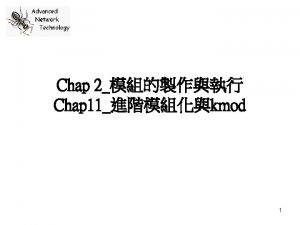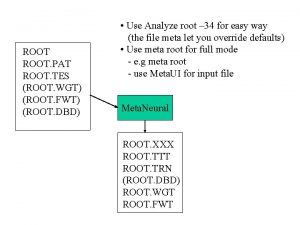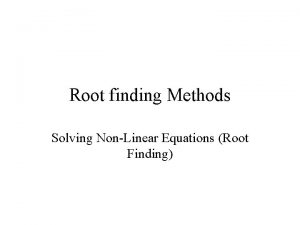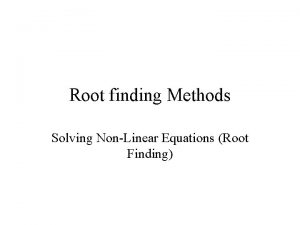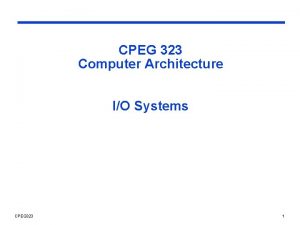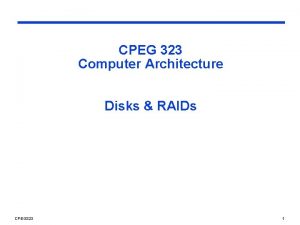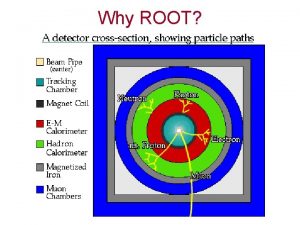Root Finding COS 323 1 D Root Finding























- Slides: 23

Root Finding COS 323

1 -D Root Finding • Given some function, find location where f(x )=0 • Need: – Starting position x 0, hopefully close to solution – Ideally, points that bracket the root f ( x +) > 0 f(x –) < 0

1 -D Root Finding • Given some function, find location where f(x )=0 • Need: – Starting position x 0, hopefully close to solution – Ideally, points that bracket the root – Well-behaved function

What Goes Wrong? Tangent point: very difficult to find Singularity: brackets don’t surround root Pathological case: infinite number of roots – e. g. sin(1/x)

Example: Press et al. , Numerical Recipes in C Equation (3. 0. 1), p. 105 2 2 ln((Pi - x) ) f : = x -> 3 x + ------- + 1 4 Pi > evalf(f(Pi-1 e-10)); 30. 1360472472915692. . . > evalf(f(Pi-1 e-100)); 25. 8811536623525653. . . > evalf(f(Pi-1 e-600)); 2. 24285595777501258. . . > evalf(f(Pi-1 e-700)); -2. 4848035831404979. . . > evalf(f(Pi+1 e-600)); 2. 24285595777501258. . . > evalf(f(Pi+1 e-100)); 25. 8811536623525653. . . > evalf(f(Pi+1 e-10)); 30. 1360472510614803. . .

Bisection Method • Given points x + and x – that bracket a root, find x half = ½ (x ++ x –) and evaluate f(x half) • If positive, x + x half else x – x half • Stop when x + and x – close enough • If function is continuous, this will succeed in finding some root

Bisection • Very robust method • Convergence rate: – Error bounded by size of [x +… x –] interval – Interval shrinks in half at each iteration – Therefore, error cut in half at each iteration: | n+1| = ½ | n| – This is called “linear convergence” – One extra bit of accuracy in x at each iteration

Faster Root-Finding • Fancier methods get super-linear convergence – Typical approach: model function locally by something whose root you can find exactly – Model didn’t match function exactly, so iterate – In many cases, these are less safe than bisection

Secant Method • Simple extension to bisection: interpolate or extrapolate through two most recent points 3 1 4 2

Secant Method • Faster than bisection: | n+1| = const. | n|1. 6 • Faster than linear: number of correct bits multiplied by 1. 6 • Drawback: the above only true if sufficiently close to a root of a sufficiently smooth function – Does not guarantee that root remains bracketed

False Position Method • Similar to secant, but guarantee bracketing 4 3 1 • Stable, but linear in bad cases 2

Other Interpolation Strategies • Ridders’s method: fit exponential to f(x +), f(x –), and f(x half) • Van Wijngaarden-Dekker-Brent method: inverse quadratic fit to 3 most recent points if within bracket, else bisection • Both of these safe if function is nasty, but fast (super-linear) if function is nice

Newton-Raphson • Best-known algorithm for getting quadratic convergence when derivative is easy to evaluate • Another variant on the extrapolation theme 2 3 1 Slope = derivative at 1 4

Newton-Raphson • Begin with Taylor series • Divide by derivative (can’t be zero!)

Newton-Raphson • Method fragile: can easily get confused • Good starting point critical – Newton popular for “polishing off” a root found approximately using a more robust method

Newton-Raphson Convergence • Can talk about “basin of convergence”: range of x 0 for which method finds a root • Can be extremely complex: here’s an example in 2 -D with 4 roots Yale site D. W. Hyatt

Popular Example of Newton: Square Root • Let f(x ) = x 2 – a: zero of this is square root of a • f’(x ) = 2 x , so Newton iteration is • “Divide and average” method

Reciprocal via Newton • Division is slowest of basic operations • On some computers, hardware divide not available (!): simulate in software • Need only subtract and multiply

Rootfinding in >1 D • Behavior can be complex: e. g. in 2 D

Rootfinding in >1 D • Can’t bracket and bisect • Result: few general methods

Newton in Higher Dimensions • Start with • Write as vector-valued function

Newton in Higher Dimensions • Expand in terms of Taylor series • f’ is a Jacobian

Newton in Higher Dimensions • Solve for • Requires matrix inversion (we’ll see this later) • Often fragile, must be careful – Keep track of whether error decreases – If not, try a smaller step in direction
 Cos 323
Cos 323 Cos 323°
Cos 323° Cos 323°
Cos 323° Cos 323
Cos 323 Cos 323
Cos 323 Cos 323
Cos 323 Cos 323°
Cos 323° Cos 323
Cos 323 Cos 323°
Cos 323° Cos 323
Cos 323 Sin 160° + sin 40°
Sin 160° + sin 40° Nilai dari 2 sin 112,5° sin 22,5° = …
Nilai dari 2 sin 112,5° sin 22,5° = … Tangente de 0 90 180 e 360
Tangente de 0 90 180 e 360 Nilai dari sin 315 derajat adalah
Nilai dari sin 315 derajat adalah Jika cos a=0 6 dan a sudut lancip maka nilai cot a
Jika cos a=0 6 dan a sudut lancip maka nilai cot a Elementi fondamentali della narrazione
Elementi fondamentali della narrazione Che cos'è la fabula
Che cos'è la fabula Cos c -cos d
Cos c -cos d Cos-1a + cos-1b formula
Cos-1a + cos-1b formula H.323
H.323 North battleford minor hockey
North battleford minor hockey Economic 323
Economic 323 Mpls ventajas y desventajas
Mpls ventajas y desventajas Cse 323
Cse 323
